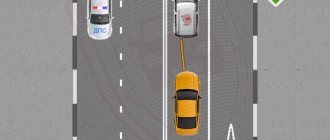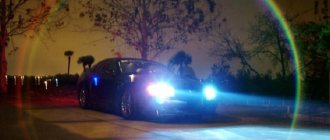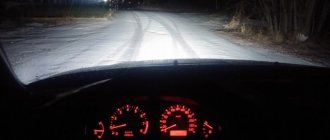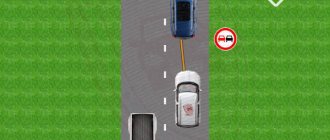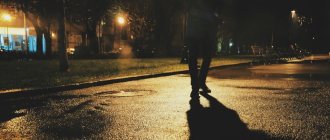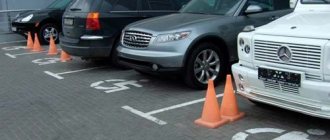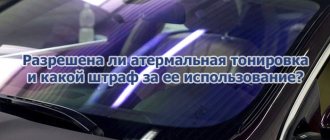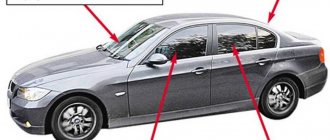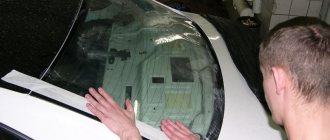Home / Autolight
Back
Published: 03/01/2021
Reading time: 8 min
0
1061
- Paragraphs from the traffic rules regarding side lights
- When to turn it on and when not to turn it on
- Types of devices and their design
- Requirements for the colors of side lights
Most drivers do not know how to turn on the side lights according to the rules, although there is nothing complicated about it. This piece of lighting equipment is often referred to simply as lights and is designed to improve safety both when parking and when driving in certain conditions.
You can use fog lights in conjunction with low or high beam headlights:
| 1. | Only at night on unlit sections of roads. |
| 2. | Only in conditions of poor visibility. |
| 3. | In both of the above cases. |
You can use fog lights both in conditions of poor visibility (snowfall, rain, fog, twilight, when road visibility is less than 300 m), and at night on unlit sections of roads together with low or high beam headlights.
Laws and regulations governing daytime running lights
Today, the requirements for daytime running lights are regulated by a number of legal and by-laws, knowledge of which, no doubt, will not hurt car owners. The first and fundamental document that sets out the requirements for running lights is Resolution of the Government of the Russian Federation dated May 10, 2010 No. 316 Moscow on amending Resolution of the Council of Ministers - Government of the Russian Federation dated October 23, 1993 No. 1090.
Accordingly, changes were made to the traffic rules of the Russian Federation: 19. Use of external lighting devices and sound signals, clause 19.5. “During daylight hours, all moving vehicles must have low-beam headlights or daytime running lights on for the purpose of identifying them.”
Before these truly fateful decisions, he explained what the running lights of a car are GOST R 41.87-99 “Uniform regulations concerning the official approval of daytime running lights of motor vehicles.”
And later, on the basis of international standards established in UNECE Rules No. 48, I made changes to the definition of the running lights category GOST R 41.48-2004
“Uniform regulations concerning the certification of vehicles with regard to the installation of lighting and light signaling devices,” which was introduced on January 1, 2005 to replace GOST R 41.48-99.
The latest GOST, daytime running lights, standardizes for all types of motor vehicles, in accordance with European requirements. According to them, all certified daytime running lights must bear the appropriate symbols, namely the approval mark.
The fog lights and rear fog lights can be turned on simultaneously:
| 1. | Only in the fog. |
| 2. | In conditions of poor visibility. |
| 3. | In conditions of limited visibility. |
Together, fog lights and rear fog lights can be turned on not only in fog conditions, but also in other conditions of poor visibility (rain, snow), when road visibility is less than 300 m. In conditions of limited visibility, fog lights are not used, as they will dazzle drivers following you.
What are side lights and why are they needed?
Side lights are not needed for beauty; they provide an indication of the size of the car on the road.
Rules of movement and behavior on the road The definition of “side lights” refers to light bulbs or optical devices. Their main functions include the formation of a visual indication of the size of the vehicle. Many drivers confuse these lamps with other optical devices. To prevent this from happening, you should know where they are located.
Side lights are located on the sides of the vehicle. They are also located front and back at the same level. They can have a single design with the headlights or be located separately.
The specified transport lighting equipment is included in the following cases:
- The roadway has poor lighting. Oversized devices must be turned on during heavy rain, snow, fog, and so on;
- While driving through a tunnel;
- When stopping the car in the dark or in poor lighting, to indicate it. In certain situations, you can additionally turn on alarm signals.
In other words, marker lamps are necessary to facilitate the movement of the driver himself and as an aid to other road users. Do not confuse side lights with daytime running lights. The latter have greater brightness, unlike the larger ones.
Additional LED lights
What do the regulations say about installing LED fog lights?
To answer this question, let's start with the main headlights. Is it possible to change the headlight bulbs recommended by the manufacturer to xenon or LEDs? Traffic regulations give a precise answer: if the manufacturer recommends or could install non-halogen light diffusers on the conveyor for a specific car model, then “upgrading” is permissible. To put it simply, everything that is included in the vehicle configuration is permissible, everything that is not provided is prohibited. If you simply replace halogen lamps with LED fog lamps, then due to the design features of the headlight (the diffuser lens only works correctly with the lamp intended for it), there will be almost no good effect. The headlights will, of course, emit more light, but the beam formation will be incorrect. It will not be possible to achieve the desired result without replacing the headlights themselves, except for blinding oncoming drivers.
All the same rules apply to fog lights with LEDs. The installation of fog lights not provided by the manufacturer according to the traffic rules (Article No. 12, paragraph No. 5) provides for punishment. It is illegal to operate a vehicle with lights that are not designed for a specific model. Will lead to deprivation of a driver's license for a period of 6 to 12 months with confiscation of light sources.
Photos provided by the Internet agency "DreamTrade"
Russian traffic rules 2021
3.1.
The number, type, color, location and operating mode of external lighting devices do not meet the requirements of the vehicle design. Note. On discontinued vehicles, it is permitted to install external lighting devices from vehicles of other makes and models.
3.2. Headlight adjustment does not comply with GOST R 51709-2001.
3.3. External lighting devices and reflectors do not work in the prescribed mode or are dirty.
3.4. Light fixtures do not have lenses or use lenses and lamps that do not match the type of light fixture.
3.5. The installation of flashing beacons, the methods of their fastening and the visibility of the light signal do not meet the established requirements.
3.6. The vehicle is equipped with:
in front - lighting devices with lights of any color other than white, yellow or orange, and retroreflective devices of any color other than white;
at the rear - reverse lights and state registration plate lights with lights of any color other than white, and other lighting devices with lights of any color other than red, yellow or orange, as well as retroreflective devices of any color other than red.
Note. The provisions of this paragraph do not apply to state registration, distinctive and identification marks installed on vehicles.
Good afternoon, dear reader.
This article will review the rules of the road that apply to the use of vehicle headlights and lights in various driving situations.
Lighting devices are designed both to illuminate the road ahead of the car (to avoid collision with an obstacle) and to indicate the car itself (to avoid collision with other vehicles).
Unfortunately, many drivers do not know the rules for using headlights and flashlights, and therefore do not use all the opportunities provided to them.
Driving in the dark
One of the following lighting fixtures must be used:
- low beam headlights;
- high beam headlights.
In this case, the main beam cannot be used:
- in populated areas on illuminated roads;
- when oncoming vehicles pass;
- when blinding drivers of passing or oncoming cars.
Additionally you can use:
- fog lights;
- fog lamp (only in case of poor visibility);
- parking lights.
External car lights
At the beginning of this article, a few words about what external lighting devices a car may have. This information is primarily intended for those who are studying at a driving school and do not yet understand what these or other headlights or lanterns are intended for.
Note. The topic “lighting devices” is one of the most difficult in a driving school, because... It is difficult for a driver candidate who has never driven before to remember the similar names of light devices and the rules for their use.
parking lights
Dimensions are small light devices located approximately at the corners of the car (4 pieces in total). They do not shine very brightly and are primarily designed so that drivers of other cars can understand in the dark where your car begins and ends.
As a rule, the car is designed in such a way that when you turn on the low or high beam headlights, the dimensions turn on automatically. That is, low beam without side lights does not work.
Daytime Running Lights
DRLs are light devices in the front of the car (2 pieces), which shine quite brightly. They are designed to improve visibility of the car from the front during daylight hours.
Daytime running lights should not be used at night because... at night, they can blind oncoming drivers due to their high brightness. However, they do not illuminate the road.
In 2021, most cars are equipped with daytime running lights, but such lights are quite rare on cars manufactured before 2010.
Low and high beam headlights
Low beam (2 bulbs) and high beam (2 bulbs) headlights are the main lighting devices that are designed to illuminate the road in front of the car.
In this case, the low beam illuminates the area directly in front of the car, and the high beam illuminates a more distant area. It makes sense to use low beam at low speeds, high beam at higher speeds.
Fog lights
PTF - 2 headlights in the front bumper of a car, designed to illuminate the road in poor visibility conditions.
Types of lighting
Dimensions vary in three main types:
- Front;
- Rear;
- Lateral.
Modern cars have halogen and LED lamps. Practice has shown that they fail less often. If you install it yourself, keep in mind that their light should not be brighter than that of the brake lights or turn lights.
Front
Front marker lights must be strictly white.
Front markers are also called differently. Another name: sidelights or parking lights. They are located in one line, along the edges of the front of the car. If the vehicle is a truck, then the front lights are located on the wings. They are also located on the wings on old-style cars.
They can only be white. According to the established rules, this light is turned on in the dark, together with an additional type of headlights, for example, with fog lights or high or low beam.
Front lights have been introduced into vehicle operation since 1968, and have been mandatory since then. Statistics have proven that when using them, the percentage of emergency situations is reduced by 50%.
Rear
In a regular passenger car, this type of lights is located at the rear of the vehicle, also on the same line. On buses and trucks they are additionally installed in the upper part. They are the main part of the headlights and can be exclusively red. They turn on simultaneously with the front ones.
Currently, the halogen type of rear lights is more often used. On modern cars, LED lamps are used. This option has many advantages:
- Service life reaches 100 thousand hours;
- LED lamps have greater brightness;
- Electricity consumption is significantly reduced;
- Withstands temperature changes and vibration.
Regulatory acts do not prohibit drivers from independently making changes to the design of their car and changing the old version of the dimensions to LED ones. However, in this matter there are certain requirements regarding the colors and brightness of the lamps used. These standards should be read before modification is carried out.
Lateral
This type of lights is intended to indicate the dimensions of the vehicle on the sides. Used in automatic machines or on trailers. There are two types of color: yellow or red. According to the established norms of the law, if a car is more than 6 meters in size, side indicating lamps must be installed on it. They are located 2 pieces on each side.
